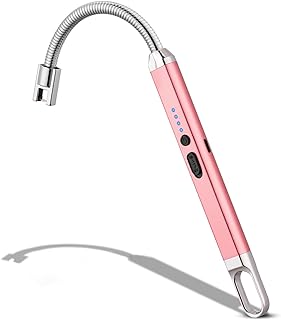The Evolution of Lighters: From Flint and Steel to Plasma Arcs
Lighters, as we know them today, have come a long way from their rudimentary beginnings. Here's a glimpse at their evolution:
1. Flint and Steel (Ancient Times):
* The earliest methods of creating fire involved striking flint against steel to produce sparks that ignited tinder.
* This method was used for centuries, but it was unreliable and required skill and practice.
2. The Tinder Box (16th Century):
* This portable device combined a flint, steel, and a receptacle for tinder.
* It was easier to use than just flint and steel but still relied on external tinder.
3. The Wheel and Flint Lighter (1823):
* This invention by Johann Wolfgang D?bereiner revolutionized fire-starting.
* A rotating wheel of flint sparked against steel, igniting a stream of hydrogen gas, creating a reliable and consistent flame.
* This lighter was commercially successful and became a popular tool for many years.
4. The Chemical Lighter (1830s):
* These early lighters used a chemical reaction to produce a flame.
* They relied on flammable liquids like ether or alcohol, but were often dangerous and unpredictable.
5. The Friction Lighter (1890s):
* This invention by William S. Judson used friction to create heat, igniting a small wick.
* They were bulky and required a lot of effort to light, but were more reliable than chemical lighters.
6. The Butane Lighter (1910s):
* This lighter, developed by Carl Gustaf Mos��n, utilized a pressurized butane gas cartridge to fuel a flame.
* This design proved to be safe, convenient, and long-lasting, paving the way for modern lighters.
7. The Electric Lighter (1970s):
* These lighters used electricity to create a spark, igniting a fuel source.
* They were often considered more eco-friendly than butane lighters, but required charging and were less reliable.
8. The Modern Lighter (Present Day):
* Today, lighters come in various forms, from classic butane lighters to sophisticated plasma arc lighters.
* They are designed for specific purposes, with features like windproof flames, adjustable flames, and even rechargeable designs.
Key Developments:
* Fuel Source: From flammable liquids to butane gas and electric sparks, lighter fuel sources have constantly evolved, aiming for safety and efficiency.
* Ignition Mechanism: Flint and steel have given way to friction, piezoelectric elements, and even plasma arcs, leading to more reliable and convenient methods of fire starting.
* Design and Features: Lighters have become more compact, lightweight, and feature-rich, offering functionalities like adjustable flames, windproof protection, and unique aesthetics.
The Future of Lighters:
* Sustainability: Eco-friendly lighters that use renewable fuels and are reusable are becoming increasingly popular.
* Technology: Plasma arc lighters are gaining traction due to their lack of fuel and flame, offering a more sustainable and safer alternative.
* Design: Smart lighters with features like Bluetooth connectivity, temperature control, and customizability are emerging, further enhancing the user experience.
The evolution of lighters reflects a constant pursuit of safety, efficiency, and convenience, driven by technological advancements and changing societal needs. The journey continues, with lighters adapting to future challenges and possibilities.


